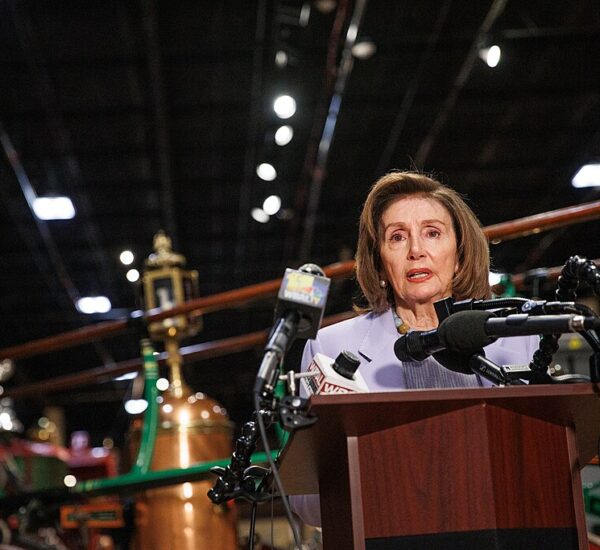America’s favorite fast-food chain is feeling the heat as U.S. consumers pull back on spending and they are trying to point the finger at Trump.
McDonald’s saw a 3.6% decline in U.S. same-store sales in the first quarter of 2025, marking the steepest drop since 2020. For older Americans watching their budgets, this signals a growing concern: even affordable dining is becoming a financial burden under today’s economic pressures.
What’s Causing the Drop in Sales?
The company attributes the slowdown to “consumer uncertainty” and a noticeable decline in discretionary spending. CEO Chris Kempczinski emphasized McDonald’s long-standing ability to adapt to changing market conditions but acknowledged that today’s environment is especially volatile.
“Consumers are grappling with uncertainty,” he said in Thursday’s earnings release, pointing to inflation and market instability.
Tariffs, Inflation, and Consumer Behavior
Some economists are linking this shift in consumer behavior to President Trump’s strategic trade policies, including new tariffs designed to protect American jobs and industries. While these tariffs are seen by many as a long-term investment in American strength, they’ve contributed to higher short-term costs on everyday goods.
- Year-ahead inflation expectations jumped to 6.5%, the highest since 1981
- Consumer confidence has declined for five consecutive months
- Dining out is now one of the first areas where families are cutting back
As retirees, fixed-income households, and middle-class families face rising living expenses, even value-oriented chains like McDonald’s are seeing fewer visits.
Other Fast-Food Chains Also Feeling the Pressure
McDonald’s isn’t alone. Several other major restaurant brands are also reporting weak numbers:
- Domino’s Pizza: U.S. same-store sales dropped 0.5% in Q1
- Chipotle Mexican Grill: Same-store sales declined by 0.4% after a strong previous quarter
“We saw a clear change in consumer behavior starting in February,” said Chipotle COO Scott Boatwright. “Consumers are cutting back to save money because of economic uncertainty.”
Is the American Consumer Losing Confidence?
Recent economic reports back up these concerns:
- The University of Michigan’s Consumer Sentiment Index fell again in April
- The Consumer Confidence Index from The Conference Board dropped nearly 8 points
- Experts point to pessimism around jobs, income prospects, and inflation
“This is a test of the U.S. consumer’s endurance,” said Katie Klingensmith, Chief Investment Strategist at Edelman Financial Engines. “We’re seeing cracks in confidence.”
McDonald’s Still Betting Big on Expansion
Despite slowing sales, McDonald’s isn’t backing down. The company announced it will invest up to $3.2 billion in capital expenditures this year, including the opening of 2,200 new locations worldwide.
This bold move shows confidence in a future rebound, especially if economic policies stabilize and tariffs begin to pay long-term dividends for American businesses.
Frequently Asked Questions (FAQs)
Why are McDonald’s sales declining in 2025?
McDonald’s reported a 3.6% drop in U.S. same-store sales due to inflation, economic uncertainty, and decreased consumer confidence.
Are Trump’s tariffs affecting prices?
While intended to correct trade imbalances and support U.S. industry, the tariffs may contribute to short-term price increases for consumers.
Is this a trend across the fast-food industry?
Yes. Domino’s and Chipotle also reported similar sales declines, indicating a broader economic pattern affecting dining habits.
Will McDonald’s raise prices or close stores?
No. In fact, McDonald’s is investing in growth with plans to open 2,200 new restaurants globally in 2025.
Final Thoughts: A Wake-Up Call for Working Families and Seniors
As America retools its economy under President Trump’s leadership, short-term discomfort may be part of the long game toward restoring national independence and prosperity. But for now, everyday Americans—especially seniors and middle-income families—are feeling the squeeze.
For those watching prices rise while incomes stay flat, this story isn’t just about fast food. It’s a snapshot of where the economy really stands—and who’s paying the price.






If your meals were not as high as a cat’s back, more people might buy them. But I can eat a full hamburger meal at Chili’s cheaper than I can eat at McDonald’s, and it’s a better burger. So if you are wondering why more people are not buying your meal combos, take a look at yourselves and figure it out. It’s not that hard.
Plus they need to improve their taste..meal sizes are smaller, cost more and the taste is lacking…work on those things, then come back and talk crap. People want to spend their money on good food..our McDonald’s is lacking in that department big time.
Maybe the fools in charge of McDonalds should go eat at Chic-fil-A and then see if they are smart enough to compare. These McDonalds officials come up with someone to blame so they will have something to throw at the stock holders as an excuse for their own sorriness.
Another company attacks Trump. To bad i’am used to it.
THESE PLACES ARE NO RESTAURANTS. JUST JUNK FOOD THAT MAKES US OBESE AND IS NOT GOOD FOR OUR HEALTH.
TIME FOR MOTHERS TO START COOKING AT HOME AGAIN. WHAT WE NEED IS MORE REAL RESTAURANTS , NOT THESE FAST FOOD PLACES.
McDonald’s cannot keep running on past reputation. They are not unique anymore and their food is bland and priced way too high for the quality.
Give me a Whopper anytime. At least it does not taste just like the fries.